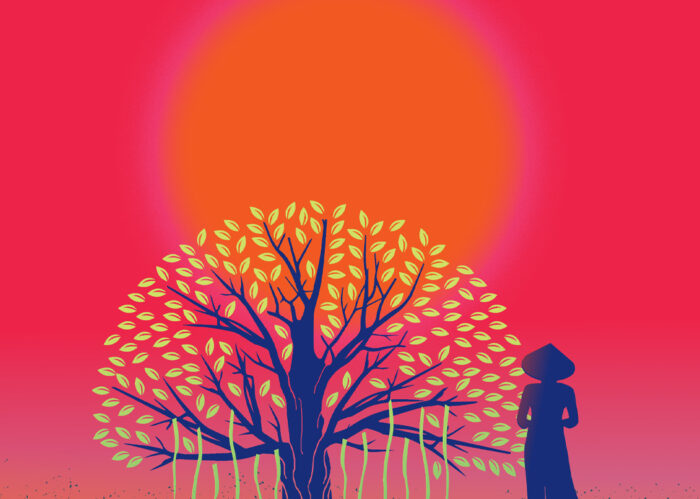December Lucky Stars: Splendor of Our World
 December temperatures might keep you trapped indoors, but this month’s Lucky Stars offer you the chance to reconnect with the outdoors from the warmth of your living room. Get the low-down of the oddly beautiful courtship of a Neohelix albolabris woodland snail, heed warnings of paralysis-inducing shrubs, and discover how Rowan trees were used to prevent the dead from rising from their graves. Indulge in all of these splendors of our world for $2.99 or less apiece this month!
December temperatures might keep you trapped indoors, but this month’s Lucky Stars offer you the chance to reconnect with the outdoors from the warmth of your living room. Get the low-down of the oddly beautiful courtship of a Neohelix albolabris woodland snail, heed warnings of paralysis-inducing shrubs, and discover how Rowan trees were used to prevent the dead from rising from their graves. Indulge in all of these splendors of our world for $2.99 or less apiece this month!
 Last Child in the Woods by Richard Louv: “I like to play indoors better ’cause that’s where all the electrical outlets are,” reports a fourth-grader. Never before in history have children been so plugged in — and so out of touch with the natural world. In this groundbreaking new work, child advocacy expert Richard Louv directly links the lack of nature in the lives of today’s wired generation — he calls it nature deficit — to some of the most disturbing childhood trends, such as rises in obesity, Attention Deficit Disorder (ADD), and depression.
Last Child in the Woods by Richard Louv: “I like to play indoors better ’cause that’s where all the electrical outlets are,” reports a fourth-grader. Never before in history have children been so plugged in — and so out of touch with the natural world. In this groundbreaking new work, child advocacy expert Richard Louv directly links the lack of nature in the lives of today’s wired generation — he calls it nature deficit — to some of the most disturbing childhood trends, such as rises in obesity, Attention Deficit Disorder (ADD), and depression.
Some startling facts: By the 1990s the radius around the home where children were allowed to roam on their own had shrunk to a ninth of what it had been in 1970. Today, average eight-year-olds are better able to identify cartoon characters than native species, such as beetles and oak trees, in their own community. The rate at which doctors prescribe antidepressants to children has doubled in the last five years, and recent studies show that too much computer use spells trouble for the developing mind.
Nature-deficit disorder is not a medical condition; it is a description of the human costs of alienation from nature. This alienation damages children and shapes adults, families, and communities. There are solutions, though, and they’re right in our own backyards. Last child in the Woods is the first book to bring together cutting-edge research showing that direct exposure to nature is essential for healthy childhood development—physical, emotional, and spiritual.
What’s more, nature is a potent therapy for depression, obesity, and ADD. Environment-based education dramatically improves standardized test scores and grade point averages and develops skills in problem solving, critical thinking, and decision making. Even creativity is stimulated by childhood experiences in nature. Yet sending kids outside to play is increasingly difficult. Computers, television, and video games compete for their time, of course, but it’s also our fears of traffic, strangers, even virus-carrying mosquitoes—fears the media exploit—that keep children indoors. Meanwhile, schools assign more and more homework, and there is less and less access to natural areas. Parents have the power to ensure that their daughter or son will not be the “last child in the woods,” and this book is the first step toward that nature-child reunion.
You can buy the Last Child in the Woods e-book for $2.99 throughout December.
 The Drunken Botanist by Amy Stewart: Sake began with a grain of rice. Scotch emerged from barley, tequila from agave, rum from sugarcane, bourbon from corn. Thirsty yet? In The Drunken Botanist, Amy Stewart explores the dizzying array of herbs, flowers, trees, fruits, and fungi that humans have, through ingenuity, inspiration, and sheer desperation, contrived to transform into alcohol over the centuries.
The Drunken Botanist by Amy Stewart: Sake began with a grain of rice. Scotch emerged from barley, tequila from agave, rum from sugarcane, bourbon from corn. Thirsty yet? In The Drunken Botanist, Amy Stewart explores the dizzying array of herbs, flowers, trees, fruits, and fungi that humans have, through ingenuity, inspiration, and sheer desperation, contrived to transform into alcohol over the centuries.
Of all the extraordinary and obscure plants that have been fermented and distilled, a few are dangerous, some are downright bizarre, and one is as ancient as dinosaurs—but each represents a unique cultural contribution to our global drinking traditions and our history.
This fascinating concoction of biology, chemistry, history, etymology, and mixology—with more than fifty drink recipes and growing tips for gardeners—will make you the most popular guest at any cocktail party.
You can buy the The Drunken Botanist e-book for $1.99 throughout December.
 Wicked Plants by Amy Stewart: A tree that sheds poison daggers; a glistening red seed that stops the heart; a shrub that causes paralysis; a vine that strangles; and a leaf that triggered a war.
Wicked Plants by Amy Stewart: A tree that sheds poison daggers; a glistening red seed that stops the heart; a shrub that causes paralysis; a vine that strangles; and a leaf that triggered a war.
In Wicked Plants, Amy Stewart takes on over two hundred of Mother Nature’s most appalling creations. It’s an A to Z of plants that kill, maim, intoxicate, and otherwise offend. You’ll learn which plants to avoid (like exploding shrubs), which plants make themselves exceedingly unwelcome (like the vine that ate the South), and which ones have been killing for centuries (like the weed that killed Abraham Lincoln’s mother). Menacing botanical illustrations and splendidly ghastly drawings create a fascinating portrait of the evildoers that may be lurking in your own backyard.
Drawing on history, medicine, science, and legend, this compendium of bloodcurdling botany will entertain, alarm, and enlighten even the most intrepid gardeners and nature lovers.
You can buy the Wicked Plants e-book for $1.99 throughout December.
 The Sound of a Wild Snail Eating by Elisabeth Tova Bailey: In a work that beautifully demonstrates the rewards of closely observing nature, Elisabeth Bailey shares an inspiring and intimate story of her uncommon encounter with a Neohelix albolabris—a common woodland snail.
The Sound of a Wild Snail Eating by Elisabeth Tova Bailey: In a work that beautifully demonstrates the rewards of closely observing nature, Elisabeth Bailey shares an inspiring and intimate story of her uncommon encounter with a Neohelix albolabris—a common woodland snail.
While an illness keeps her bedridden, Bailey watches a wild snail that has taken up residence on her nightstand. As a result, she discovers the solace and sense of wonder that this mysterious creature brings and comes to a greater under standing of her own confined place in the world. Intrigued by the snail’s molluscan anatomy, cryptic defenses, clear decision making, hydraulic locomotion, and mysterious courtship activities, Bailey becomes an astute and amused observer, providing a candid and engaging look into the curious life of this underappreciated small animal.
Told with wit and grace, The Sound of a Wild Snail Eating is a remarkable journey of survival and resilience, showing us how a small part of the natural world illuminates our own human existence and provides an appreciation of what it means to be fully alive.
You can buy the The Sound of a Wild Snail Eating e-book for $1.99 throughout December.
 If You Lived Here, I’d Know Your Name by Heather Lende: Tiny Haines, Alaska, is ninety miles north of Juneau, accessible mainly by water or air—and only when the weather is good. There’s no traffic light and no mail delivery; people can vanish without a trace and funerals are a community affair. Heather Lende posts both the obituaries and the social column for her local newspaper. If anyone knows the going-on in this close-knit town—from births to weddings to funerals—she does.
If You Lived Here, I’d Know Your Name by Heather Lende: Tiny Haines, Alaska, is ninety miles north of Juneau, accessible mainly by water or air—and only when the weather is good. There’s no traffic light and no mail delivery; people can vanish without a trace and funerals are a community affair. Heather Lende posts both the obituaries and the social column for her local newspaper. If anyone knows the going-on in this close-knit town—from births to weddings to funerals—she does.
Whether contemplating the mysterious death of eccentric Speedy Joe, who wore nothing but a red union suit and a hat he never took off, not even for a haircut; researching the details of a one-legged lady gold miner’s adventurous life; worrying about her son’s first goat-hunting expedition; observing the awe-inspiring Chilkat Bald Eagle Festival; or ice skating in the shadow of glacier-studded mountains, Lende’s warmhearted style brings us inside her small-town life. We meet her husband, Chip, who owns the local lumber yard; their five children; and a colorful assortment of quirky friends and neighbors, including aging hippies, salty fishermen, native Tlingit Indians, and volunteer undertakers—as well as the moose, eagles, sea lions, and bears with whom they share this wild and perilous land.
Like Bailey White’s tales of Southern life or Garrison Keillor’s reports from the Midwest, NPR commentator Heather Lende’s take on her offbeat Alaskan hometown celebrates life in a dangerous and breathtakingly beautiful place.
You can buy the If You Lived Here, I’d Know Your Name e-book for $1.99 throughout December.
 Lives of the Trees by Diana Wells: Diana Wells, author of 100 Flowers and How They Got Their Names now turns her attention to something bigger — our deep-rooted relationship with trees. As she investigates the names and meanings of trees, telling their legends and lore, she reminds us of just how innately bound we are to these protectors of our planet. Since the human race began, we have depended on them for food, shade, shelter and fuel, not to mention furniture, musical instruments, medicine utensils and more.
Lives of the Trees by Diana Wells: Diana Wells, author of 100 Flowers and How They Got Their Names now turns her attention to something bigger — our deep-rooted relationship with trees. As she investigates the names and meanings of trees, telling their legends and lore, she reminds us of just how innately bound we are to these protectors of our planet. Since the human race began, we have depended on them for food, shade, shelter and fuel, not to mention furniture, musical instruments, medicine utensils and more.
Wells has a remarkable ability to dig up the curious and the captivating: At one time, a worm found in a hazelnut prognosticated ill fortune. Rowan trees were planted in churchyards to prevent the dead from rising from their graves. Greek arrows were soaked in deadly yew, and Shakespeare’s witches in Macbeth used “Gall of goat and slips of Yew” to make their lethal brew. One bristlecone pine, at about 4,700 years old, is thought to be the oldest living plant on earth. All this and more can be found in the beautifully illustrated pages (themselves born of birch bark!) of 100 Trees.
You can buy the Lives of the Trees e-book for $1.99 throughout December.
-
Overall Score
Reader Rating: 1 Votes




I would like to order all 6 books.